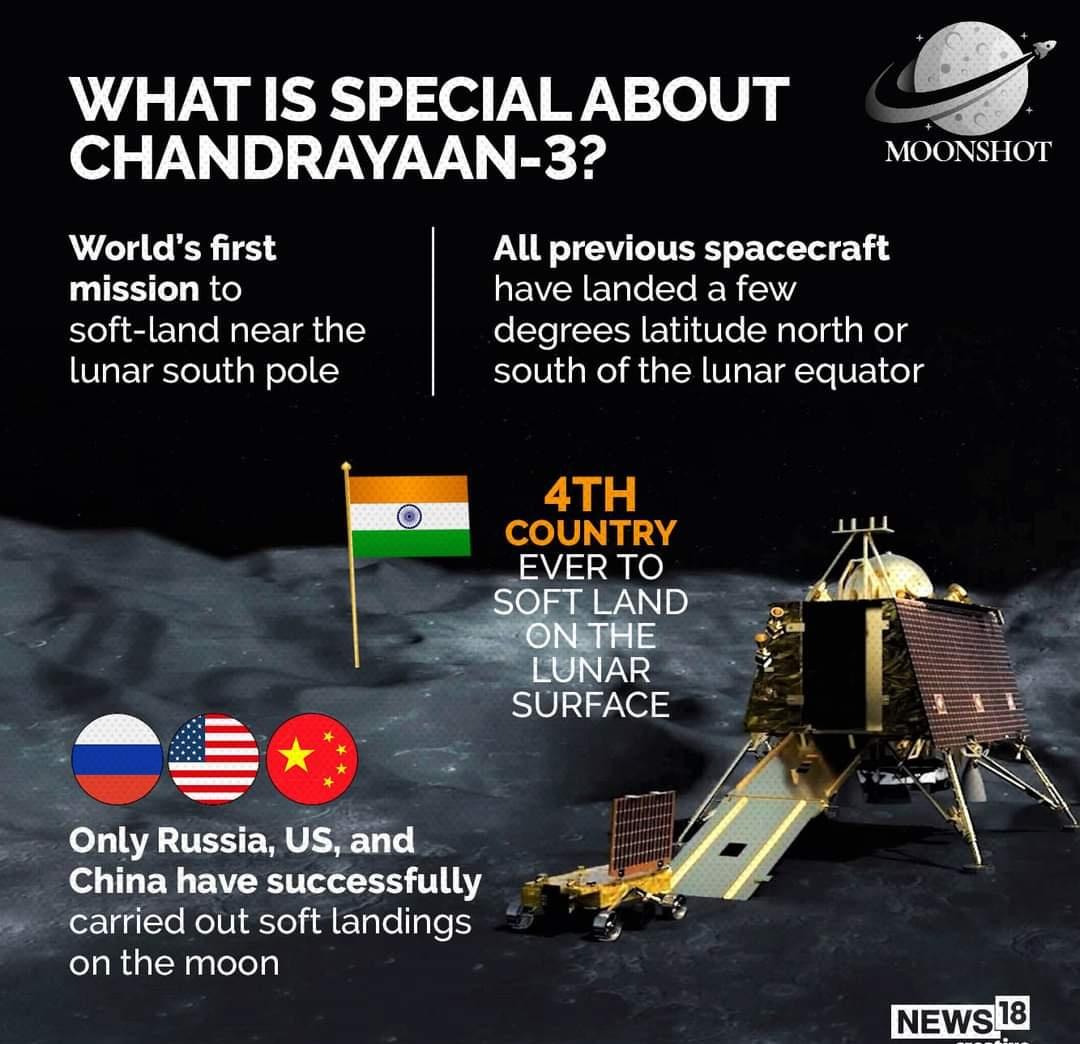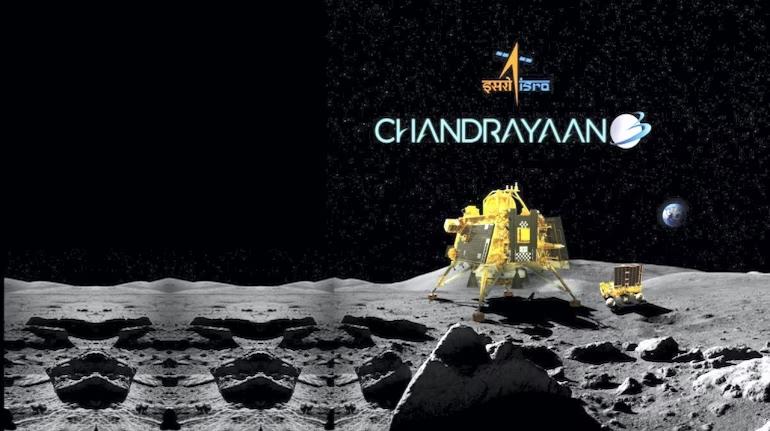Chandrayaan-3, India’s lunar exploration mission, is poised to achieve a groundbreaking soft landing near the Moon’s south pole. This strategic choice holds immense scientific and exploratory benefits, ranging from uncovering water ice reserves to unraveling the mysteries of the Solar System’s evolution.
Water Ice Reserves:
- The Moon’s South Pole boasts larger continuous shadow areas and colder climate, potentially harboring higher concentrations of water ice.
- Accumulated over billions of years due to extreme cold and limited sunlight, these ice deposits are valuable resources for future human missions.
- Water ice offers applications like drinking water, fuel production, and life support systems, making this region vital for potential lunar habitats.
Exploring Lunar History:

- Limited sunlight in the south pole maintains the surface’s pristine state, preserving the Moon’s historical record.
- Geological features, rock structures, and impact craters here provide insights into the Moon’s origin, development, and geological transformations.
- Scientists can extract valuable information about the Moon’s evolution spanning billions of years.
Solar System Evolution:
- Polar craters have captured substances from the Solar System’s initial phases, including comets and asteroids.
- The Moon’s south pole becomes a treasure trove for studying these cosmic entities, enhancing understanding of their genesis and structure.
- Insights into overarching mechanisms influencing Solar System formation and development can be gleaned.
Future Lunar Bases Potential:
- Proximity of water ice near the south pole makes it an attractive site for establishing lunar bases.
- Water extraction and refinement offer crucial supplies for extended missions and sustaining human presence.
- Permanent shadow areas mitigate temperature fluctuations, making them potential sites for habitat construction.
Astronomical Observations:
- Moon’s south pole provides a pristine, elevated position for unobstructed astronomical observations.
- Earth’s atmospheric interference and light pollution are minimized, enabling in-depth space exploration.
- Astronomers can study remote galaxies, cosmic background radiation, and transient celestial events effectively.



 Indian Olympic Medal Winners List Till N...
Indian Olympic Medal Winners List Till N...
 Who is the Inventor of the Gramophone?
Who is the Inventor of the Gramophone?
 HS Dhaliwal Appointed New DGP Of Andaman...
HS Dhaliwal Appointed New DGP Of Andaman...
